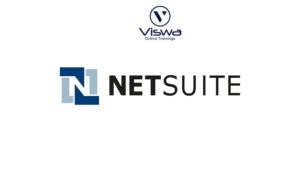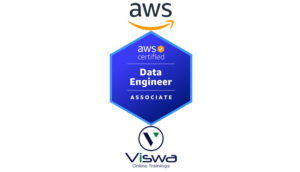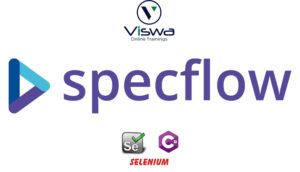SAS programming Certification Training
One of the top providers of online IT training worldwide is VISWA Online Trainings. To assist beginners and working professionals in achieving their career objectives and taking advantage of our best services, We provide a wide range of courses and online training.
Learners : 1080
Duration : 30 Days
About Course
Since it will be the foundation of your future career in SAS Certification, SAS programming is aware of the requirement for a high-quality training programme as well as practical implementation experience. Our comprehensive online SAS programming training course covers all the major topics covered in class, with a focus on real-world situations. You may easily clear your worries and receive the precise assistance that is required from SAS programming Online Training sessions since you have access to knowledgeable trainers and instructor-led training sessions.
SAS programming Training Course Syllabus
✔ History
✔ SAS comes in ERP sector or not? Why?
✔ What is Clinical Research Study?
✔ What is SOP (Standard Operating Procedure)?
✔ What is DBMS?
✔ What is SAP (Statistical Analysis Plan)?
✔ Managing windows in window environment
✔ Why using the S-A-S in different sectors.
✔ How to use the data step to read and manipulate complex forms of data
✔ Write Data and Proc steps.
✔ Data step compile and execution
✔ Read any type of external raw data
✔ Reading raw data Environment into DATA SET using Input statement & advance INLIFE statement options
✔ Working with Data Storage in SAS libraries creation for user-defined libraries and multi-engine architecture
✔ Reading data from data set to another data set.
✔ To manage the SAS window environment used with global options.
✔ To manage existing data with controlling statements and expressions
✔ Creating Summary Information, SAS Functions, Transforming Data
✔ Changing variable types using the PUT and INPUT functions summarizing data files
✔ To expert data from data sets to delimiter files using with data set block
✔ Understand error messages in the Log and debug your program
✔ Using Do loops for repetitive calculations and processing
✔ Using Arrays to process across observations and processing
✔ Using the update statement to update data in the existing dataset.
✔ Using the MODIFY statements to update and modify data in place Merging concepts
✔ Concatenation concept in merging
✔ Interleaving concepts and merging
✔ Different kinds of match merging using MERGE statement using the contribution (IN=) option in merge concept
✔ Using ODS concept to generate reports
✔ Role of ODS concepts in reporting SAS output
✔ To generate output in different panels like RTF, HTML,PDF and XML Using ODS
✔ UTILITY PROCEDURES:
✔ IMPORT PROCEDURE
✔ EXPORT PROCEDURE
✔ DB LOAD PROCEDURE
✔ COPY PROCEDURE
✔ CPORT PROCEDURE
✔ COMFORT PROCEDURE
✔ DELETE PROCEDURE
✔ SETTING PROCEDURE
✔ OPTIONS PROCEDURE
✔ TEMPLATE PROCEDURE
✔ APPEND PROCEDURE
✔ COMPARE PROCEDURE
✔ SORT PROCEDURE
✔ DATASETS PROCEDURE
✔ PRINT TO PROCEDURE
✔ 1FORMAT PROCEDURE
✔ TRANSPOSE PROCEDURE
✔ ACCESS PROCEDURE
✔ REPORTING PROCEDURES:
✔ PRINT PROCEDURE
✔ TABULATE PROCEDURE
✔ REPORT PROCEDURE
✔ CHART PROCEDURE
✔ CHART PROCEDURE
✔ PLOT PROCEDURE
✔ GPLOT PROCEDURE
✔ STAT PROCEDURES:
✔ MEANS PROCEDURE
✔ SUMMARY PROCEDURE
✔ UNIVARIATE PROCEDURE
✔ CORR PROCEDURE
✔ FREQ PROCEDURE
✔ TEST PROCEDURE
✔ FREQ PROCEDURE
✔ RANK
✔ TEST PROCEDURE
✔ ANOVA PROCEDURE
✔ REG PROCEDURE
✔ GLM PROCEDURE
✔ Introduction to SQL Concepts
✔ Create new tables, indexes, views, and reports
✔ What are Cartesian Products, what is join
✔ Inner, FULL, OUTER, LEFT, and RIGHT Joins
Union join, Cross joins
✔ Set Operator us such as union and intersection joining multiple tables
✔ HOW TO USE SAS MACROS IN SQL
✔ How to retrieve Raw data different from DATABASES to SAS environment using SQL Statements
✔ To create tables in different databases using SAS SQL statement
✔ To manage in different databases using SAS SQL Statements
✔ Uses of pass-through facility
✔ How to communicate with other databases like Access, Oracle, DB2
✔ To control and manage other databases from SAS
✔ Macro Concepts & Advantages
✔ SAS Macro Language
✔ Macros And Macro Variables
✔ Creating Macro Variables & Using Macro Variables
✔ Creating Modular Code With Macros
✔ Invoking A Macro
✔ Adding Parameters to Macros
✔ Writing Macros With Conditional Logic
✔ Using Various Procedures in Macro Variables
✔ Nesting of Macros
✔ Multiple And Multi-Level Macros
✔ Macro Functions
| Live Instructor Based Training With Software |
| Lifetime access and 24×7 support |
| Certification Oriented content |
| Hands-On complete Real-time training |
| Get a certificate on course completion |
| Flexible Schedules |
| Live Recorded Videos Access |
| Study Material Provided |
SAS programming Training - Upcoming Batches
7th NOV 2022
8 AM IST
Coming Soon
AM IST
5th NOV 2022
8 AM IST
Coming Soon
AM IST
Don't find suitable time ?
CHOOSE YOUR OWN COMFORTABLE LEARNING EXPERIENCE
Live Virtual Training
-
Schedule your sessions at your comfortable timings.
-
Instructor-led training, Real-time projects
-
Certification Guidance.
Self-Paced Learning
-
Complete set of live-online training sessions recorded videos.
-
Learn technology at your own pace.
-
Get access for lifetime.
Corporate Training
-
Learn As A Full Day Schedule With Discussions, Exercises,
-
Practical Use Cases
-
Design Your Own Syllabus Based
SAS programming Training FAQ'S
WHERE statement can sets the criteria for any data set in a data step or a proc step.
- Using SAS Macros.
- Using a %include statement
Index function – Searches a character expression for a string of characters
SAS Statements Results
a=’ABC.DEF (X=Y)’;
b=’X=Y’;
x=index(a,b); 10
put x;
Get ahead in your career by learning SAS Programming through VISWA Online Trainings
Use the KEEP= dataset option (data statement or set statement) or KEEP statement in a data step.
eg.
Data fewdata (keep = var10 var11);
Set fulldata (Keep= VAR1 VAR2 VAR3 VAR4 VAR5);
Keep var6 var7;
Run;Proc sort data= Dist_County; By state district city; Run;
Reviews
 Vishnu Gadipudi2023-08-20I Enrolled in VISWA Online Trainings for IBM Integration BUS course . Recently I Completed IBM Integration BUS Batch. It was Really Awesome Experience. Best Place To Learn , Experienced Trainer, Gives Us High Level Knowledge....
Vishnu Gadipudi2023-08-20I Enrolled in VISWA Online Trainings for IBM Integration BUS course . Recently I Completed IBM Integration BUS Batch. It was Really Awesome Experience. Best Place To Learn , Experienced Trainer, Gives Us High Level Knowledge.... Navya Biradavolu2023-08-20I was enrolled for looker Bl Tool,it was amazing experience . especially soft skill batch is one of my favourite batch . overall learning process is quite impressive.
Navya Biradavolu2023-08-20I was enrolled for looker Bl Tool,it was amazing experience . especially soft skill batch is one of my favourite batch . overall learning process is quite impressive. Indla sneha2023-08-20I have joined I have joined VISWA Online TRAININGS for Java full stack course and i have completed Advance Java module. I had a good knowledge of Hibernate, spring,spring boot,spring MVC. Tutor has knowledge in depth and is supportive. Srinadh sir solved all our doubts....
Indla sneha2023-08-20I have joined I have joined VISWA Online TRAININGS for Java full stack course and i have completed Advance Java module. I had a good knowledge of Hibernate, spring,spring boot,spring MVC. Tutor has knowledge in depth and is supportive. Srinadh sir solved all our doubts.... bindu hima2023-08-20I am recently completed Talend course and trainer is Rajendra very professional and helpful. All the doubts were solved in a precise manner.
bindu hima2023-08-20I am recently completed Talend course and trainer is Rajendra very professional and helpful. All the doubts were solved in a precise manner. Tarunasree Gowra2023-08-20"I truly enjoyed this course." Chaitanya sir fantastic-very knowledgeable. Sir give us very informative and clear instruction on how to achieve the goal. Thank you!
Tarunasree Gowra2023-08-20"I truly enjoyed this course." Chaitanya sir fantastic-very knowledgeable. Sir give us very informative and clear instruction on how to achieve the goal. Thank you! Tejaswini Kommu2023-08-20Overall Linux Admin sessions batch was very good. Mr. RAM Krishna teaching was very helpful to remind our basic concepts in linux & networking.
Tejaswini Kommu2023-08-20Overall Linux Admin sessions batch was very good. Mr. RAM Krishna teaching was very helpful to remind our basic concepts in linux & networking. Gopanaboina Mounika2023-08-20It was great learning with such a great and experienced staff. Praveen Sir (Oracle EPM Cloud - FCCS) was very helpful and operations team also very helpful in solving any minor problems students go through process.
Gopanaboina Mounika2023-08-20It was great learning with such a great and experienced staff. Praveen Sir (Oracle EPM Cloud - FCCS) was very helpful and operations team also very helpful in solving any minor problems students go through process. Jyothi Gutlapalli2023-08-20I like to share my experience which provide lots of courses and one of those I recently completed my Salesforce BA Course and I like to tell you it was a great experience and my knowledge and confidence is really boosted after completing this course.
Jyothi Gutlapalli2023-08-20I like to share my experience which provide lots of courses and one of those I recently completed my Salesforce BA Course and I like to tell you it was a great experience and my knowledge and confidence is really boosted after completing this course. Harshibandi2023-08-20Good experience and great learning platform for Hyperion Essbase and Planning. The faculty is also well trained and soft spoken.
Harshibandi2023-08-20Good experience and great learning platform for Hyperion Essbase and Planning. The faculty is also well trained and soft spoken. Chaitu Viswa2023-08-20It was very good session for QlikView. I would like to thank to teacher Mr.Chandu for providing guidance for the required modules. Thanks VISWA Team for giving apportunity to leran new skills.
Chaitu Viswa2023-08-20It was very good session for QlikView. I would like to thank to teacher Mr.Chandu for providing guidance for the required modules. Thanks VISWA Team for giving apportunity to leran new skills.




